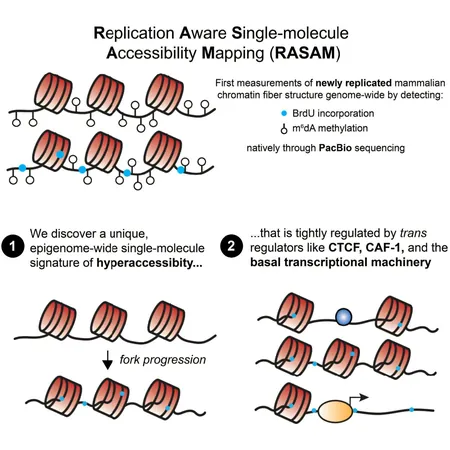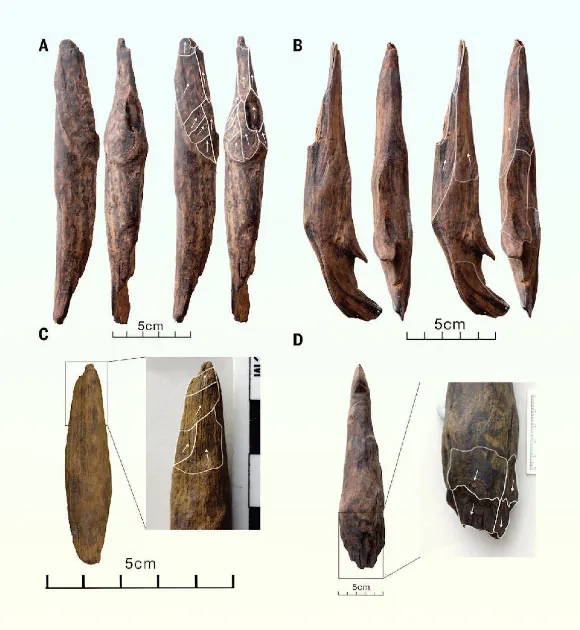
Unlocking the Secrets of DNA: Revolutionary Method Exposes 'Hyperaccessible' DNA Windows Post-Replication!
2025-01-21
Author: Nur
Introduction
DNA replication is a process that occurs tirelessly throughout the human body—an astounding trillions of times daily! Every time a cell divides, whether for healing damaged tissues, replacing aging cells, or simply facilitating growth, it meticulously copies its DNA to ensure that the new cells carry the same explicit genetic blueprints.
The Mystery of DNA Replication
Despite its significance, the intricate processes involved in DNA replication have remained largely misunderstood. Prior attempts to observe this critical mechanism were often hindered by the use of harsh chemicals that compromised DNA structures or methodologies that could only capture brief segments of DNA, resulting in an incomplete understanding.
Groundbreaking Research
However, researchers from the Gladstone Institutes recently made a groundbreaking advancement in this field. In a study published in the prestigious journal *Cell*, they introduced a novel technique that synergizes long-read DNA sequencing with an innovative predictive artificial intelligence model. This dual approach has unveiled crucial insights about what transpires in the fleeting moments and hours immediately following DNA replication.
New Insights into DNA Structure
Dr. Vijay Ramani, a lead investigator at Gladstone, remarked on the longstanding biochemical conundrum posed by DNA replication: "The machinery responsible for replication must disassemble pre-existing DNA structure so that it can be accurately reinstated in new cells." His team's pioneering method allows for a refined mapping of DNA structure both before and after this intricate replication process—an achievement considered revolutionary in the realm of single-cell genomics.
The RASAM Technique
With their innovative technique, termed RASAM (replication-aware single-molecule accessibility mapping), the researchers uncovered an astonishing phenomenon—large segments of nascent DNA remain "hyperaccessible" for an extended period following replication. This accessibility permits various proteins, including those that play crucial roles in gene regulation, to interact with the DNA.
Implications for Cancer Research
Dr. Ramani observed, "Initially, we presumed that this heightened accessibility could lead to genomic chaos, but surprisingly, that isn't the case." Unlike the well-organized DNA found in mature cells, this newly formed DNA retains a partially unwrapped state for hours post-replication, which holds significant implications for our understanding of not only biological processes but also for developing targeted therapies for diseases, particularly cancer.
Potential Therapeutic Applications
For instance, in the context of cancer—characterized by rapid cell division—these findings could allow for innovative treatments that effectively target these cells during their vulnerable post-replication phase. Furthermore, researchers might manipulate this period of accessibility to fine-tune gene expression, opening pathways to prevent disease onset.
Future Research Directions
The team, which includes research associates Megan Ostrowski and bioinformatics fellow Marty Yang, also discovered that the increased accessibility is finely regulated at specific locations on the DNA strands corresponding to the initiation of gene expression. Yet, their research has raised further questions about how these newly formed cells are secured during this transient phase of heightened accessibility, indicating fresh avenues for exploration in genomic research.
Concluding Remarks
Dr. Ramani expressed his enthusiasm, stating, "What excites me about this work is the development of methods that facilitate discovery. As biologists, we are bound by our observational capabilities. Our potential to treat diseases and make informed decisions hinges on the precision of our measurements. These new tools are vital for unveiling previously unseen regions of the genome." This cutting-edge research not only paves the way for a deeper understanding of cellular functions but also opens up promising new horizons in the fight against complex diseases, ultimately reinforcing the dynamic interplay between biotechnology and our pursuit of medical advancements. Don't miss out on the future of genetic research—this is just the beginning!




 Brasil (PT)
Brasil (PT)
 Canada (EN)
Canada (EN)
 Chile (ES)
Chile (ES)
 Česko (CS)
Česko (CS)
 대한민국 (KO)
대한민국 (KO)
 España (ES)
España (ES)
 France (FR)
France (FR)
 Hong Kong (EN)
Hong Kong (EN)
 Italia (IT)
Italia (IT)
 日本 (JA)
日本 (JA)
 Magyarország (HU)
Magyarország (HU)
 Norge (NO)
Norge (NO)
 Polska (PL)
Polska (PL)
 Schweiz (DE)
Schweiz (DE)
 Singapore (EN)
Singapore (EN)
 Sverige (SV)
Sverige (SV)
 Suomi (FI)
Suomi (FI)
 Türkiye (TR)
Türkiye (TR)
 الإمارات العربية المتحدة (AR)
الإمارات العربية المتحدة (AR)